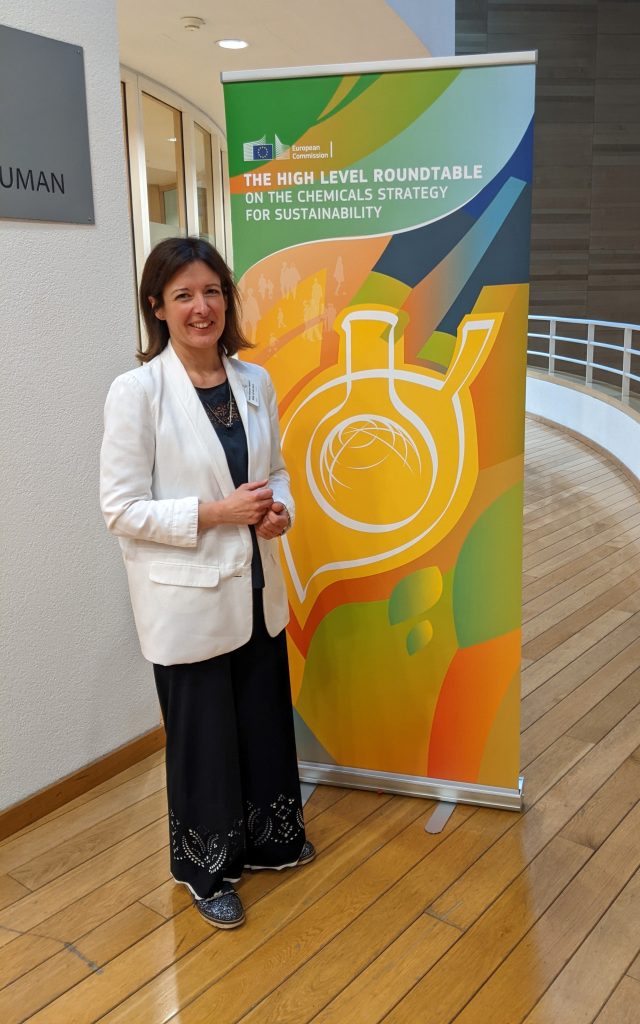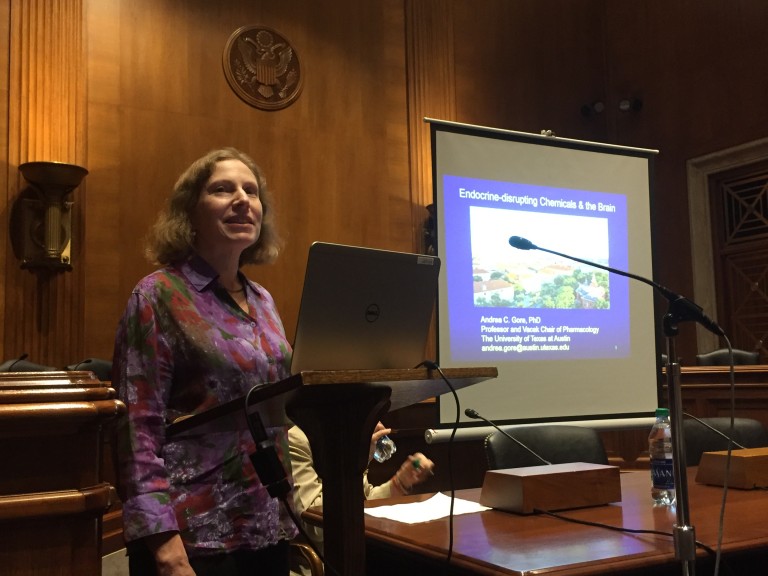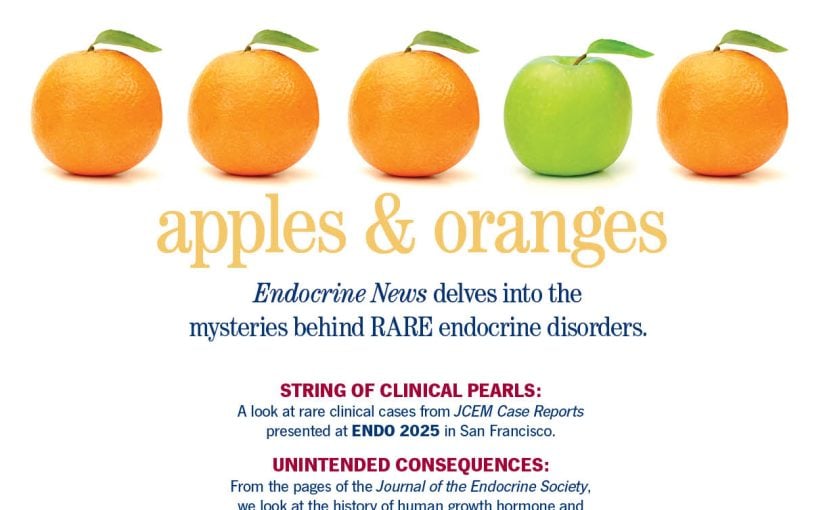The Endocrine Society was the first such organization to recognize the threat endocrine disruptors posed to human health. Endocrine News shares the story of how that came to pass over the course of several years, through prolific research, meetings, symposia, forums, as well as an advocacy effort that reaches around the world.
In 2006,we published an article entitled “Endocrine disruption for endocrinologists (and others)” in the June issue of Endocrinology in which we wrote: “The Endocrine Society should continue to be a leader in research on endocrine disruption…[and] should also inform government policy and regulatory rules as well as scientists, physicians, the public, and the media.”
Much has happened in the subsequent 16 years, including the recent launching of a new Endocrine Disruptor Special Interest Group (SIG). This SIG provides a significant opportunity for the Endocrine Society to expand its influence and expertise on the mechanisms of endocrine diseases, and to apply knowledge to clinical practice. For the endocrine disruption field, this new SIG signals that endocrine-disrupting chemicals (EDCs) have an actual home for its research at the Endocrine Society.
Here, we give a brief history of EDCs in the context of the Society, discuss where we are today, and articulate plans for the future.
No Home of Their Own
The Endocrine Society formally defines an EDC as an exogenous chemical or mixture of chemicals that interferes with any aspect of hormone action. Exposure to EDCs is ubiquitous; babies are born pre-polluted with endocrine disruptors. EDCs are found in everyday products such as personal care and household products, food preservatives, clothing and furniture, plastics and plasticizers, and pesticides.

When exposure occurs in utero or in early development, their effects lead to permanent alterations in gene expression and epigenetic programming, leading to increased susceptibility to a variety of diseases and dysfunctions. EDCs are linked to greater risk of hormone-dependent cancers, diabetes, reproductive, metabolic, immune, learning and behavior, and cardiovascular and liver diseases. There are currently about 1,000 known endocrine disruptors, likely just the tip of the iceberg.
“There have been several impediments to getting EDCs on the radar. One is that there is no endocrine disruption society. Scientists interested in endocrine disruption work in many classical fields like cancer, reproduction, thyroid, neuroscience, and toxicology and attend those society conferences. But they have no home of their own.”
There have been several impediments to getting EDCs on the radar. One is that there is no endocrine disruption society. Scientists interested in endocrine disruption work in many classical fields like cancer, reproduction, thyroid, neuroscience, and toxicology and attend those society conferences. But they have no home of their own. This is a particular problem in basic endocrinology: to our knowledge there are no PhD programs in endocrine disruption; in fact, there are few (if any) such programs in endocrinology itself, although the discipline may be subsumed within other programs. This can also create a bottleneck in translation to clinical understanding and practice.
Early ENDO Connections

Enter the Endocrine Society (ES), slowly and cautiously at first. This story started in the early 2000s. The proposition at the time that EDCs were a human health problem was quite controversial, and endocrinologists were minimally involved in research in this area. EDC research was not present at the Endocrine Society other than occasional symposia talks delivered at the annual meeting. These talks were difficult to get on the program due to the controversy surrounding whether EDCs were a genuine concern for endocrinologists or a problem for human health.
Fierce advocacy to the Endocrine Society’s Annual Meeting Steering Committee for more EDC programming led to the opportunity to organize a special meeting on EDCs in association with the ENDO annual meeting. This culminated in the Forum on EDCs in 2005, an unprecedented full-day meeting that took place the day before ENDO in San Diego, Calif. It was a full house, attended by basic scientists and clinical endocrinologists alike. This Forum included state-of-the-art talks by leading researchers in the field, and there was electricity in the room as connections began to be made between research and the clinic, and endocrinologists realized that this was their bailiwick.
A Scientific Statement Debut
The Endocrine Society’s Research Affairs Committee noted the Forum’s success and the growing recognition that EDCs were, at heart, intrinsic to endocrinology. The committee agreed to convene a group of EDC experts to write a white paper on the subject to review the evidence and determine whether there was a critical mass of evidence. At the same time, then-Endocrine Society President, Robert Carey, MD, had developed an initiative for the Society to publish Scientific Statements intended as comprehensive reviews that would bring cutting-edge topics to the Endocrine Society.
The timing was propitious: the white paper on EDCs was invited to be the Society’s first Scientific Statement. This statement noted that the Endocrine Society should be the de facto home for EDC research researchers. Held to a higher bar because of the potential prominence of a Scientific Statement, the paper went out for first internal committee review and then a full Society commenting period.

The Endocrine Society published its first Scientific Statement on EDCs in the June 2009 issue of Endocrine Reviews. To date, it has been cited over 4,000 times. Fast forward, and based on an explosive increase in publications on EDCs, a second Scientific Statement on EDCs (referred to as EDC-2), was published in the December 2015 issue of Endocrine Reviews, following a similar review process.
Together, the two Endocrine Society Scientific Statements were transformative in bringing EDCs into the mainstream. In 2012, the Society also articulated in its Statement of Principles in which it made recommendations on how a deep understanding of endocrinology was essential for EDC science and policy. In 2014, the Endocrine Society and the International Pollution Elimination Network (IPEN) developed a guide to EDCs translated into eight languages. It is also notable that over this period, the Endocrine Society journals were increasingly a key publications venue for the field, and EDC science became a regular feature of the annual ENDO meetings.
Achieving a Unique Leadership Position
At this point, the Endocrine Society recognized its unique leadership position in EDCs. Ultimately, the Endocrine Society published a Position Statement on EDCs in 2018 in which, for the first time, the Society took a strong stand on EDCs as a significant public health concern and made recommendations for change to the regulatory system and policy. It is also notable that during this period, the Society’s Advocacy and Public Outreach Core Committee began including EDCs on the agenda of talking points whenever Society members visited Capitol Hill to represent the Endocrine Society on issues of key importance to public health (see sidebar).
“…to our knowledge there are no PhD programs in endocrine disruption; in fact, there are few (if any) such programs in endocrinology itself, although the discipline may be subsumed within other programs. This can also create a bottleneck in translation to clinical understanding and practice.”
Today, the Endocrine Society’s new EDC Special Interest Group has the potential to remove barriers and silos between basic scientists, clinical investigators, and physicians-in-practice within the Society. This has been a key impediment, as the cause-and-effect between exposure to EDCs and the manifestation of a disease that may take years or decades to emerge, can only be revealed through the combination of fundamental research, clinical studies, and epidemiology.
This combination is reflected in the disciplines and training of the SIG coordinators: along with the three of us (basic researchers) are two physician-scientist experts in EDCs, Leonardo Trasande, MD, MPP, and Robert Sargis, MD, PhD. In its short existence the SIG has held its first multidisciplinary webinar and it already has over 200 members. Moving forward, we will work to have more EDC-focused sessions at ENDO to develop a satellite meeting on EDCs and diseases, and importantly, to train the next generation of EDC researchers.
Now EDCs have a home, and it is the Endocrine Society.
Gore is professor and Vacek Chair in Pharmacology, The University of Texas at Austin, Austin, Texas; and a past editor-in-chief of the Endocrine Society’s journal, Endocrinology ([email protected]); Zoeller is professor emeritus, Biology Department, University of Massachusetts Amherst, Amherst, Mass. ([email protected]); Heindel is the director, Healthy Environment and Endocrine Disruptor Strategies (HEEDS.ORG), a program of Environmental Health Sciences, ([email protected]).

